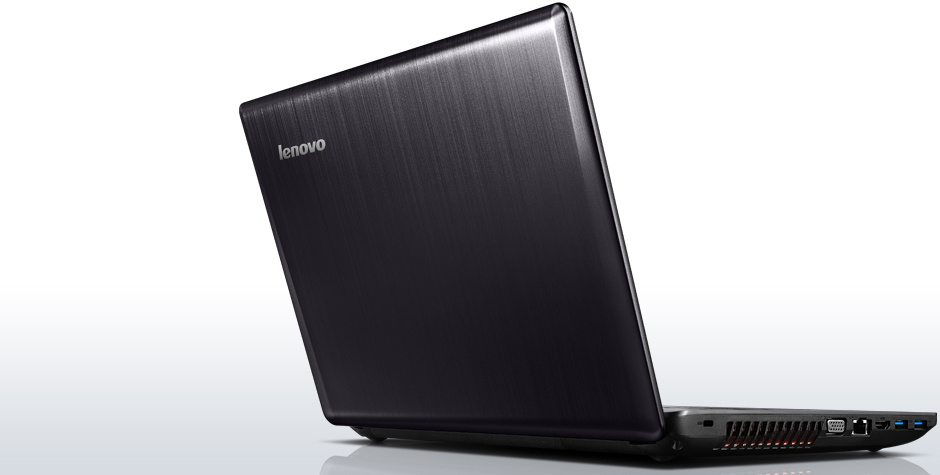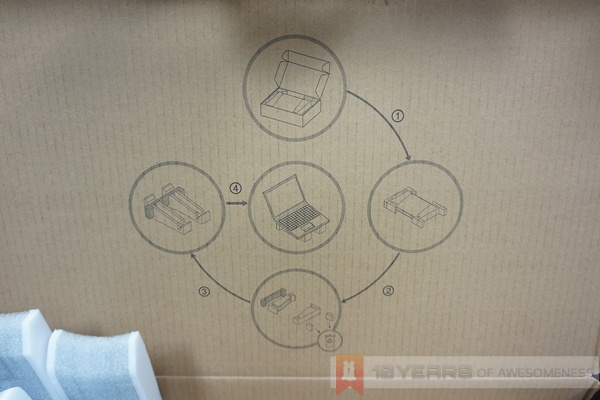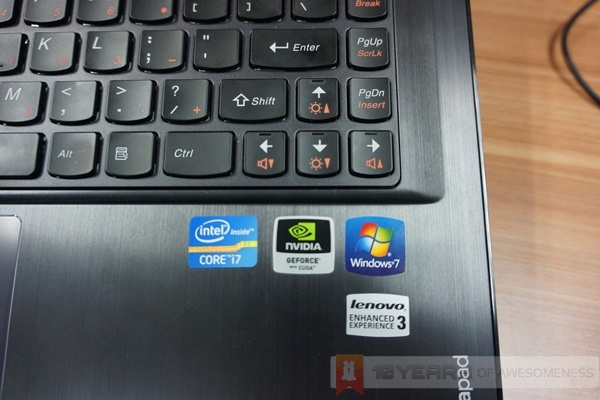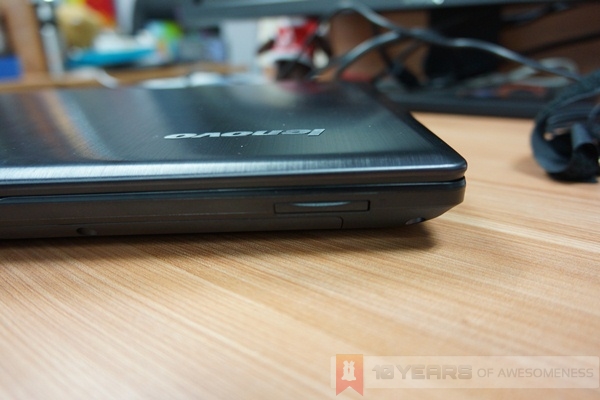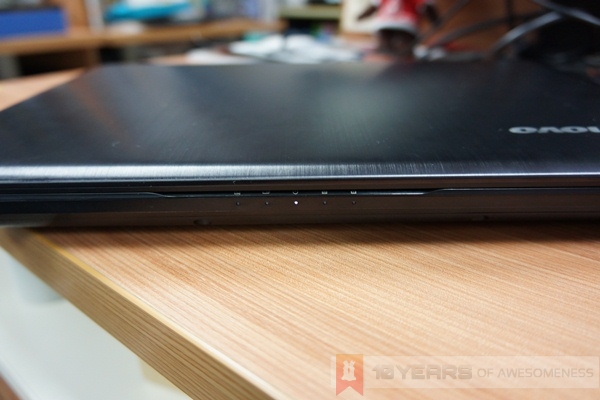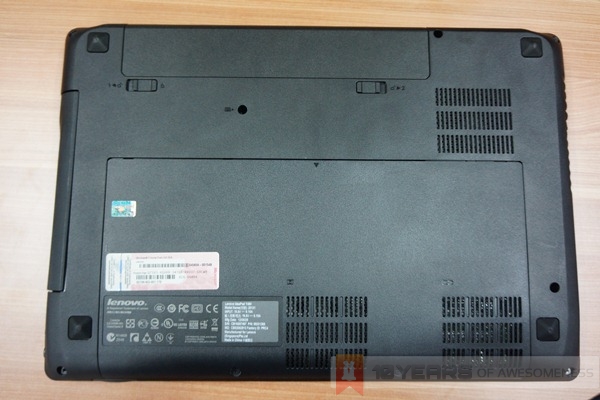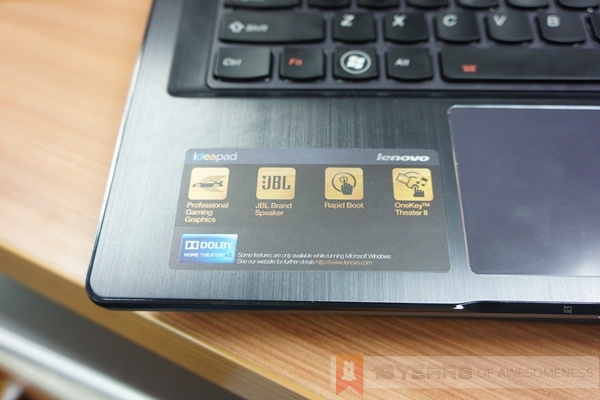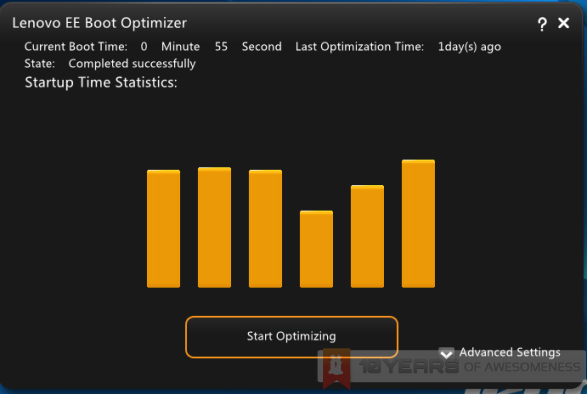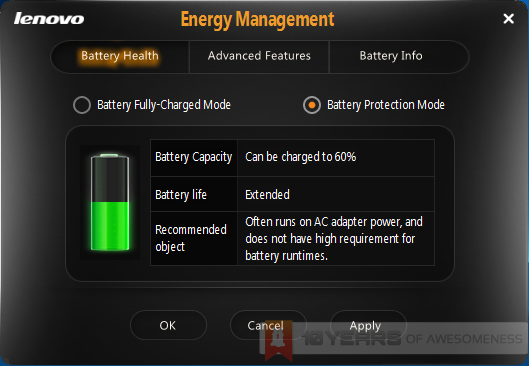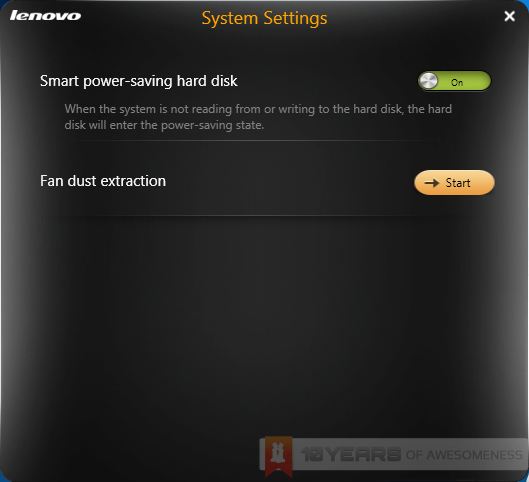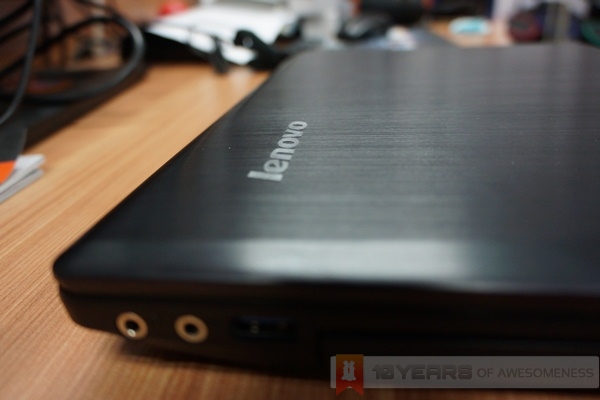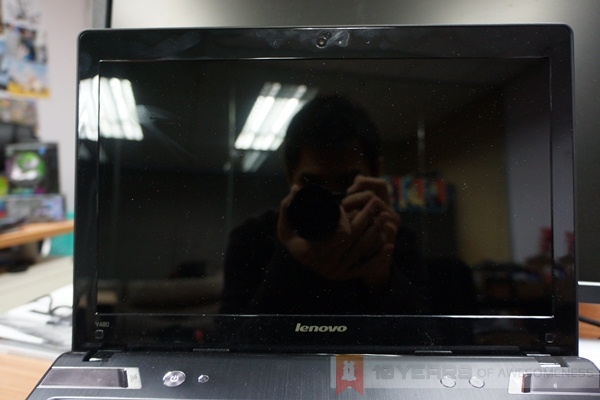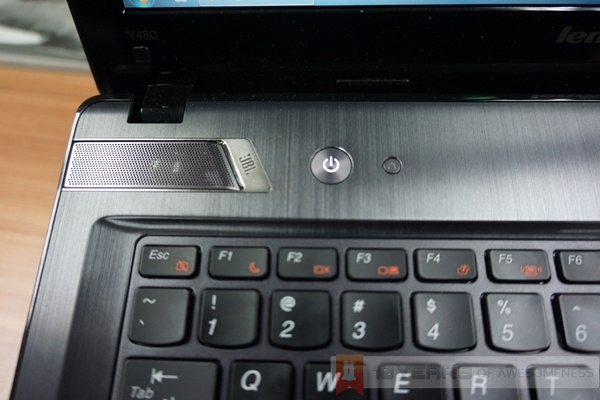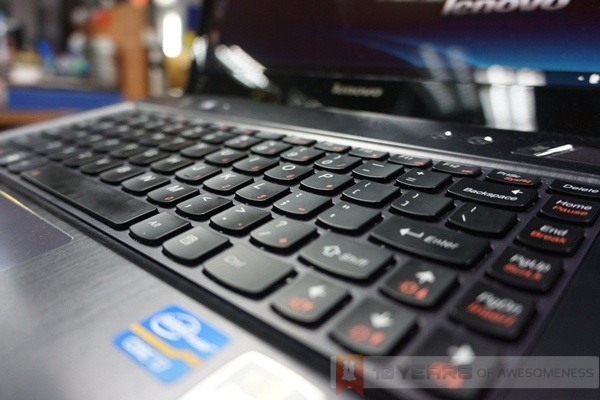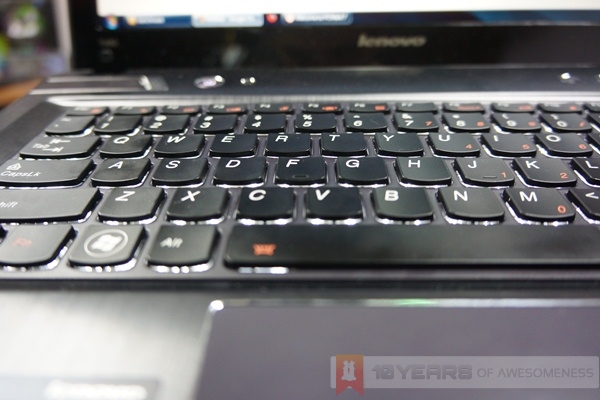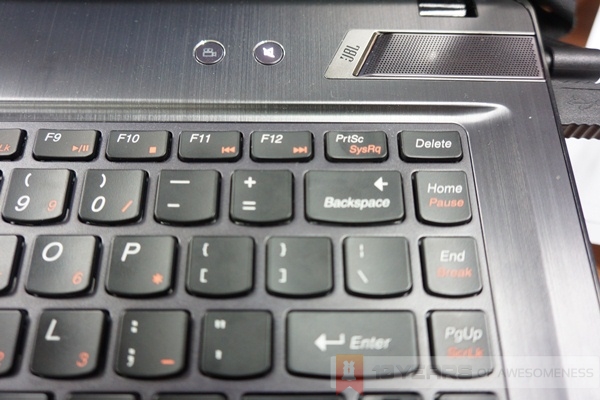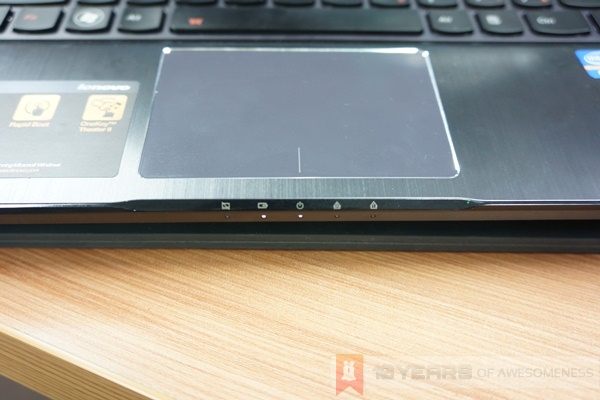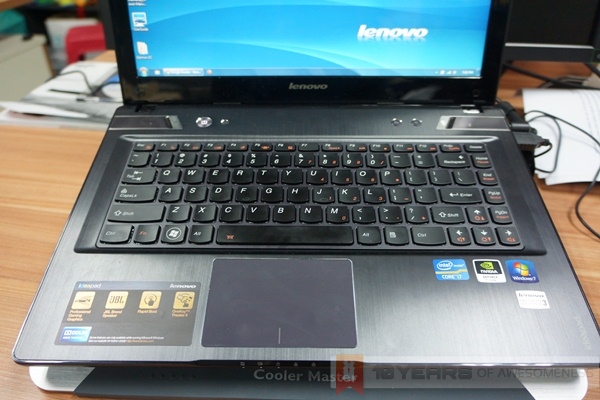Remark: Lenovo Malaysia has refreshed the Y480 with the latest Intel Core i7-3630QM processor and bumped the GPU to a pretty awesome NVIDIA GeForce GT650M, as well as included a full copper heatsink and a new design, while reducing RAM to 4GB and the price to an ultra-competitive RM2599. The other aspects of the refreshed Y480 remain the same as the one we had for our review.
First Impressions
Lenovo’s Y-series laptops were primarily designed for multimedia users who are heavy on using their laptops for watching movies, listening to music, and the occasional gaming session. However, in recent times the latest iterations of the Y-series laptops seem to be catering more for the ever-growing budget-conscious casual gaming crowd.
The new Y480 laptop is more or less the same. For a multimedia laptop, the Y480’s design appears to be pretty subdued. The lid’s classy brushed metal cover is only adorned with a chrome Lenovo logo and nothing else – which is good. The mixture of brushed metal and plastic, however, is not. The plastic parts do not impart confidence when held with one hand. Of course, that is not to say the build quality is terrible. Bearing in mind the price of the laptop, the build quality is not bad at all.
But does it mean that it is the best laptop out there for gamers on a budget? Read on to find out.
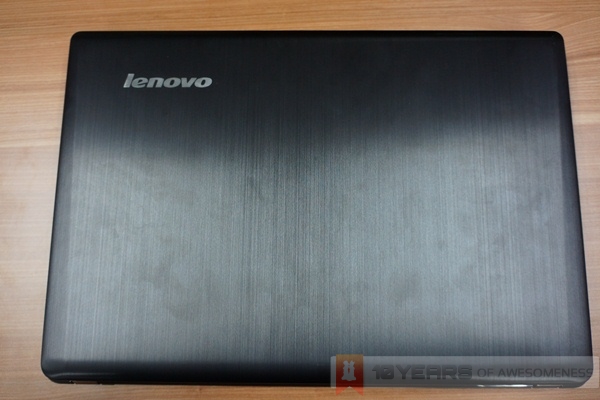 Classy brushed metal cover hides the multimedia monster beneath
Classy brushed metal cover hides the multimedia monster beneath
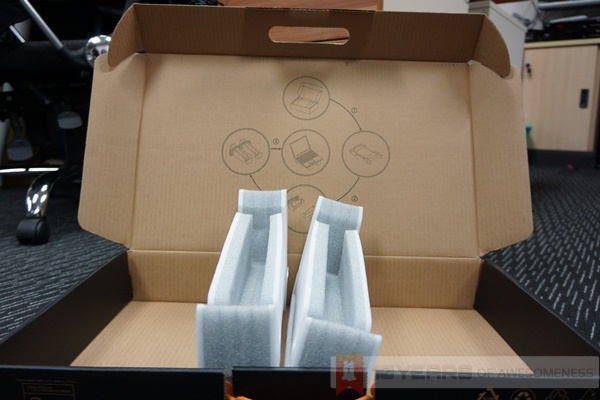 Lenovo’s novel idea to reuse the styrofoam packaging and turn it into a snug notebook stand
Lenovo’s novel idea to reuse the styrofoam packaging and turn it into a snug notebook stand
Benchmarks
Running our usual suite of benchmarking tools, we found nothing surprising on the Y480. On PCmark 7, the Y480 scored 2514, but manages only P1248 on 3Dmark 11. This was most probably due to the weak-ish graphics card in the Y480.
Gaming wise, the Y480 does perform pretty well, but only on older games which run on DirectX 10 or lower. The table below lists the break down in terms of FPS for two games (Resident Evil 5 & Batman: Arkham City) under various settings:
Hardware
One of the first laptops to feature the Intel Core i7-3610QM processor, it also sports a mid-range GPU in the form of the NVIDIA GeForce GT640M LE. There’s 8GB of DDR3 RAM in there as well, and also 500GB of hard disk space. In terms of connectivity, there are four USB ports (yes, four – a rarity these days on 14-inchers) – three of which are USB 3.0, – integrated 6-in-1 reader, individual microphone and headphone jacks, full-sized LAN port, HDMI and VGA ports, and a Kensington slot. On specs alone, the Y480 justifies its RM2999 price tag.
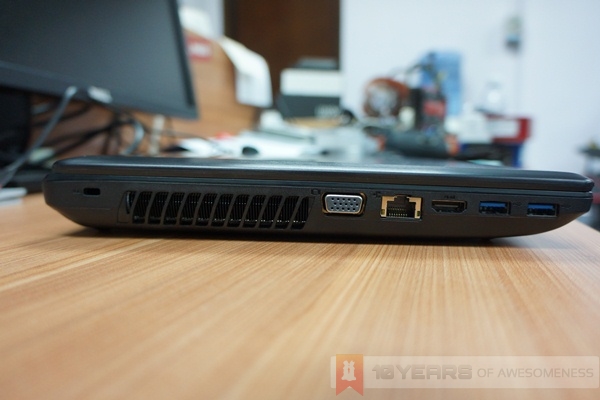 (L-R) Kensington lock, heatsink, VGA out, LAN port, HDMI out, 2x USB 3.0 ports
(L-R) Kensington lock, heatsink, VGA out, LAN port, HDMI out, 2x USB 3.0 ports
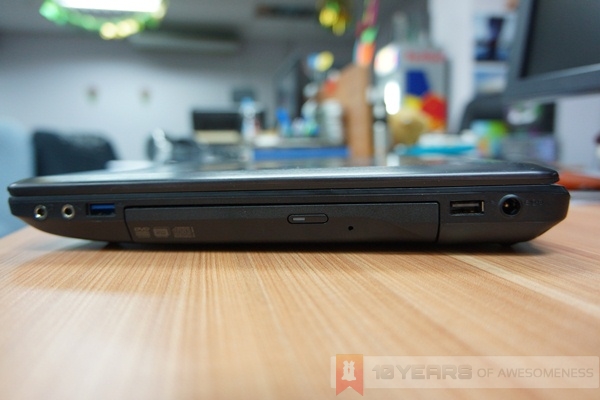 (L-R) Headphone & microphone jacks, USB 3.0 port, DVD burner, USB 2.0 port, A/C port
(L-R) Headphone & microphone jacks, USB 3.0 port, DVD burner, USB 2.0 port, A/C port
However, at 32.8mm thick, this is one rather bulky laptop. Of course, being a multimedia-centric laptop, the extra thickness is necessary to prevent the internal hardware from overheating (considering what is packed inside). However, those interested in these laptops don’t really find the added thickness an issue, since they are rarely taken out anyway. Interestingly, the Y480 only weighs 2.30kg, so much of the bulkiness stems from the thickness of the laptop.
In some ways, the thick chassis is justified. While many have criticized Lenovo’s decision to place the hard disk in between the processor and GPU in the chassis, which resulted in higher than average operating temperatures for the hard disk, the bulk of the laptop managed to keep temperatures in check. During benchmarking and gaming, we found that the maximum temperatures hit by the processor and the hard disk was 88 and 57 degrees Celsius, respectively.
Software
The Lenovo Y480 runs on Windows 7 Home Premium pre-installed, although Lenovo do offer freeDOS versions at a lower price – one of very few brands to do so nowadays. With more local institutions of higher learning offering free Windows 7 keys (highly possible that they will continue to do so for Windows 8), offering laptops without Windows pre-installed and hence lowering the price is a very smart move by Lenovo.
Besides that, the Y480 does come with the standard suite of bloatware that comes with almost every other laptop these days. However, Lenovo also included its utility software, such as Lenovo Boot Optimizer and Lenovo Energy Management, which are actually useful.
Lenovo Boot Optimizer, for instance, is pretty self-explanatory. By analysing user behaviour, the software optimizes Windows and boot-up programs in order to decrease boot-up times. That is, of course, in theory. In our random testing of the Boot Optimizer, which requires a reboot each time it is performed, boot-up times fluctuated wildly, with the times sometimes even going up rather than down.
On the other hand, Lenovo Energy Management looks just like a skin on top of Windows 7’s Power Options menu in the taskbar. Delve deeper, and you’ll find a useful Battery Management menu, which has an option for the laptop to stop charging the battery once it hits 60% to protect the battery from overcharging. It also allows users to check on the status of the battery itself.
There’s also a System Settings menu, where users can enable the hard disk to enter power saving state when not in use. Finally, there is “fan dust extraction” – a feature unique to Lenovo laptops. This process, which takes about two minutes, spins the cooling fans in the opposite direction to remove the dust that has accumulated on the fans, and inside the chassis.
Battery Life
Lenovo claims that the Y480 can manage five hours of battery life, but with the hardware inside, that was hardly going to be the case. Under regular usage, we managed about three and a half hours of battery life. Of course, that was without changing the power settings to max out every mAh that the battery has.
Display
And so we come to the Achilles heel of the Y480: the display. First off, the glossy and extra reflective screen and bezels make it a fingerprint magnet, not to mention making it look rather cheap. Add to that an outdated resolution of 1366 x 768, it’s fair to say that the Y480 does not do very well in terms of display.
Audio
Luckily, the poor display quality isn’t mirrored by (no pun intended) the audio quality of the Y480. These JBL-branded speakers proudly adorn the top of the keyboard, one on each side. As with most multimedia laptops, they provide above-average sound quality, although the maximum volume could be louder.
Keyboard and trackpad
Lenovo makes very good keyboards and trackpads; that’s a given. This hallmark, which is especially evident in its ThinkPad range of business notebooks, is what Lenovo is aiming to achieve with its consumer notebooks with the use of the AccuType keyboards, which are slowly being implemented for all consumer notebooks by Lenovo.
And for the most part, they succeeded. The backlit AccuType keyboards have excellent travel and feedback, with the soft cushiony keys a delight to type on. In fact, it would have been one of the best keyboard layouts ever – but for one frustrating flaw: the truncated backspace button.
You see, to accommodate the AccuType keyboard across a range of laptop sizes, the layout and size of the keyboard had to be standardized. Unfortunately the keyboard designers thought that the backspace, backward slash, enter, and right shift keys are too large and underutilizes the available space. So they truncated it to accommodate the Home, End, Page Up and Down buttons – which many rarely use (especially since the trackpad isn’t half bad at all).
The result? Touch typists who are used to the large backspace key would constantly hit the Home key, making typing on the AccuType keyboard an unbelievably frustrating affair. What’s worse, the AccuType keyboard looks like it’s here to stay.
On the other hand, the trackpad on the Y480 is of the single click variety, where the entire trackpad is clickable. The material of the trackpad is actually pretty interesting: smooth enough for easy scrolling, yet provides enough feedback to give users complete confidence in using the trackpad.
Competition
When comparing to the competition, most prospective buyers (like yours truly) would usually set a budget, and stick to it. Hence, when deciding the competition, the deciding factor here would be the price. On that note, there are some alternatives to Lenovo’s Y480, which retails at RM2999.
First off, the usual suspects. ASUS has the A45VM, which has the same processor and essentially the same GPU, but has a larger hard drive at 750GB – retailing at RM2899. Acer has the M5 Ultrabook, which includes a superfast SSD at the expense of a ULV processor – again at RM2899. Dell, with the Inspiron 14R Special Edition, offers slightly better specs than the Y480 at only RM2799.
But, Lenovo recently announced a refreshed Y480, with a dramatically more powerful GPU and highly unique design…and pricing it at about RM400 less. The refreshed Y480 has a Core i7-3630QM processor and an NVIDIA GeForce GT650M GPU at a price point that no competitor can match.
On the other hand, the greatest competitor to this refreshed Y480, interestingly, comes from Lenovo itself. The Y580, the bigger brother to the Y480, comes with a 15.6-inch Full HD screen and gaming-grade NVIDIA GeForce GTX660M – a massive bump in specs, and an absolute steal at only RM2999 – the same price the original Y480 was retailing for.
Conclusion
While the original Y480 didn’t offer much in terms of bang for buck, it was nonetheless one of the better-specced laptops at the time. And, with the refreshed version costing less while being more powerful, the Y480 is already generating plenty of buzz in our forums, with many building “the ultimate budget gaming laptop” by including an SSD in the optical drive bay – which, all told, costs less than RM3000 (the magic number for budget gamers).
That is, if the same gamers don’t mind plopping up another few hundred ringgit for a larger, full HD screen and NVIDIA GTX graphics…and then adding an SSD for the ultimate “ultimate budget gaming laptop”.
Follow us on Instagram, Facebook, Twitter or Telegram for more updates and breaking news.

